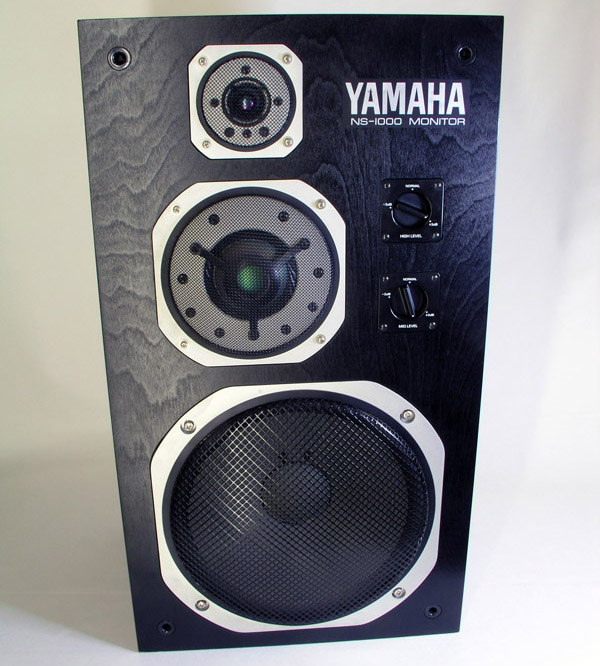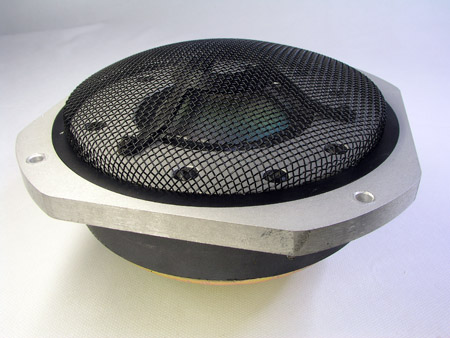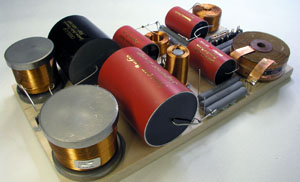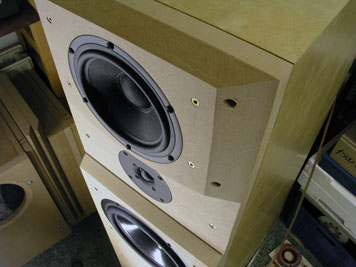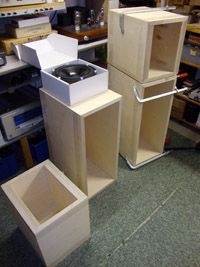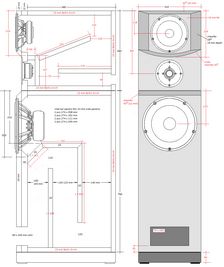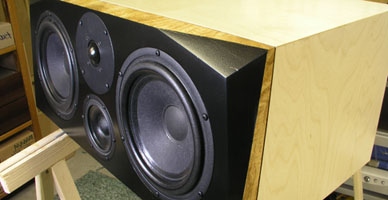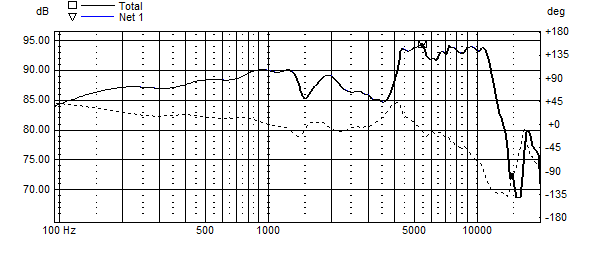Speakers' Corner Speaker Talk 2011-2014 |
| June 2014 |
|
New Speakers to come
The last three of months have been busy. Two
speakers from ScanSpeak drivers. A capable
3-way from Discovery drivers
delivering an awful lot of good sound for a very modest price tag - and
the other a very small and rather expensive mini-monitor from new
drivers not even ready for release yet.
Music
Last, but not least, a lot of time has been spent installing a new tonearm on my Lenco L75 turntable and getting to know proper set-up better by doing actual measurements. A protractor has been acquired and the Adjust+ software from Feickert Analogue is currently being tested. An article on why I listen to vinyl rather than digital is in preparation. |
| April 2014 |
|
lt's been a while since last Speakers' Corner update and a lot of things are in pipeline, but building cabinets take time. For the speaker below I had help from Jesper (Ekta Grande builder) and Jesper made the cabinets seen below and I'm pleased to launch the best SEAS speaker I've ever made. The details can be found here, or click image below. Also recently launched is a test of a new
SEAS coaxial driver, the
C18EN001/M. I'm
currently seeking a suitable bass driver for a passive 3-way system,
nothing decided yet, so please do not ask. |
| Janyary 2014 |
|
Happy New Year! ScanSpeak Discovery W18/8434G00-R2604/832000-D2604/830000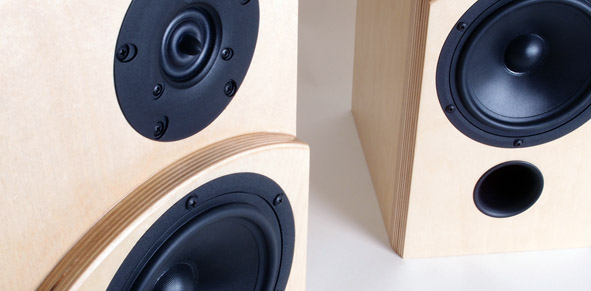 Two different front panel layouts and four different crossovers to be tested to make the best of affordable drivers. This is stepped baffles for all. If you have a router - and you need one to make loudspeaker front panels - you can make what's seen above and get the best from simple second order crossovers. |
|
November 2013 Launch of ATS-4 construction. |
|
The smallest and the biggest! Above ScanSpeak 5F/8422T01 full range driver. The smallest driver I've ever had. To the right the most ambitious construction ever launched on these pages, the ATS-4, the best from AudioTechnology and ScanSpeak. The 5F together with 10F/8414G10 have been tested on these pages and will find application in some future projects. The 5F as a mini-mini for laptop used together with a small DAC/AMP unit. The
ATS-4 has been
under way for more than half a year. Actually it started last
winter when the
Jenzen ATS was finished. Not that I wasn't satisfied with the Jenzen
ATS, but projects like these take a long time and at the time you're
finished you already have the next speaker in mind. Building the cabinets has taken several months
and for once, I don't have ideas for further developments! If it had
to be, it would be the same thing, only bigger from 12+10 inch bass
drivers and 2 x 6" for midrange - but I do not have room for this, so it
won't be. Happy reading. |
| October 2013 |
|
Autumn colours from my bonzai beech trees. I've had a box of drivers from ScanSpeak, enough
for fall and winter projects. Small full range drivers for tiny computer
systems, Discovery midbass drivers for small 2-ways of which one will be
tuned for bookshelf placement; never done that before. The new
18W/8535-01 will be used in a larger 3-way with two 8" Classic bass
drivers (winter project).
I'm pleased to see more reports back on Jenzen
projects:
http://www.troelsgravesen.dk/Diy_Loudspeaker_Projects.htm#builders-response.
Shows that people are still not afraid of building large speakers
despite extensive cabinet work and high cost. |
| 08-08-2013 |
|
Pleased to announce the
Ellam FLEX
3W - although launched 1½ month ago - but it's summertime and
weather has been unuasually kind to us this season and speaker work
has had low priority. Next in line is a 4-way, kind-of, an
extension of the Jenzen ATS. The idea here is to add an 8" in
between the 10C77 bass and the 18H middriver. Targets are higher
sensitivity, more weight to the bottom end and better transient
attack by adding a dedicated driver to the 100-200 Hz range.
By the way: If my website looks a bit strange in your current Explorer 10, choose compatability mode as my website apparently is not fully compatable with the latest version of MF Explorer. If you use Google browser there should be no problem, but my pages look better from Explorer compared to Google - for some reason. Damn MS changing things all the time - and not always for the better. |
| 30-05-2013 |
|
Two updates here in May: - The new
Ellam FLEX
mini 2-way has been under way for quite some time. Voicing four
different tweeters takes time but here we go with the first part of this
construction. The Ellam 9800 will disappear and so will the W1500/97 and
W1501/95 speakers. I also meant to delete the Ellam XT construction but
I'm still getting some response to this construction and despite not as
good as the Ellam FLEX offers an easier front panel layout and a good
starter kit for first-time diy'ers. |
| 13-04-2013 |
|
Sold out! Making room for new projects was easier than expected
although I had to make 3 x 300 litre crates for the Jenzen Illuminators!
They went to Schwitzerland.
The bass driver can be fitted into the transmission line shown above - or you can make a smaller (less deep) bass reflex design to your preference. Expected launch before the summer holidays. Please do not ask for details before launch. By the way: It's spring and time for setting up more nest boxes, here for the titmouse, port tuning = 32 mm. (port = Ĝ32 x 12 mm, volume = 2.5 litre, Fb = 152 Hz) YES, the port can be on the front, the most common question I have. 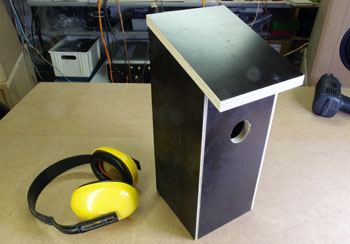 |
| 23-02-2013 |
|
"Reviewing" your own speakers is fun - and a bit frightening too. The Illumina 66 had new front panels and had been dismantled for a few months. The Jenzen Illuminators have been out of house for a couple of months and the OBL-11s have been dismantled too as I needed the drivers for other purposes and I hadn't heard them for more than a year. In the meantime my Jungson amp has undergone some major upgrade and how would the speakers respond to better front end gear?
The reason for bringing up these three speakers
is that they're up for sale. I'm in desperate need for space having five
large-scale speaker in our house and some speakers just must go. If I had another and larger living room, the OBL-11s could be my one-and-only speakers as they can do things none of the other speakers including Jenzen D and ATS can do. They're easy to drive, they have the low-end dynamic only a 15" on an open baffle can manage - and they can play vocals louder than any other speaker I've ever made. The Illumina 66 is the little brother here. That
said, the best "6+1" I've ever made. These sandwich paper cones have
more dynamic headroom compared to any other ScanSpeak driver I've tried. Illumina 66: Give it 50-100 watts from the best
solid state or valve PP you can afford. Should you be interested in buying these speakers, mail for price and do not expect anything below building cost. And please be within reasonable pick-up distance! No packing and no shipping, sorry. Mail at: troels.gravesen@hotmail.com - and please state where you live. |
| 24-12-2012 |
|
What is Your Room Like?
Any sound system set-up should start with this
question: What is your room like? Many people set up seriously expensive
systems in less than adequate acoustic environments and never render the
full potential of their investment. There are many more movies on acoustics on youtube and take a look around and get ideas. Next speaker Next speaker is a Jenzen 3-way made from Audio Tecnology drivers for bass (10C77) and mid (18H52) and ScanSpeak Be dome. Design is inspired by Wilson Audio Alexia. I love this design and despite having the same potential as the other Jenzen speakers, appears quite smaller due to the pyramid mid/tweeter arrangement. Cabinet work is the most extensive yet undertaken, so it will be a month or two before launch. 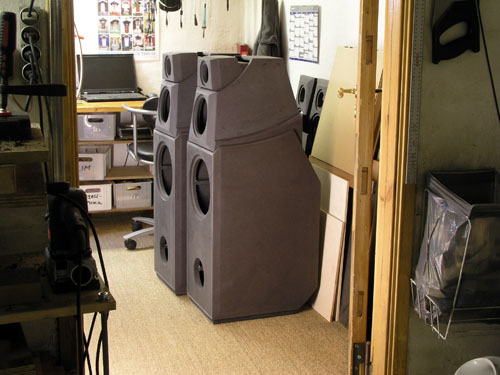
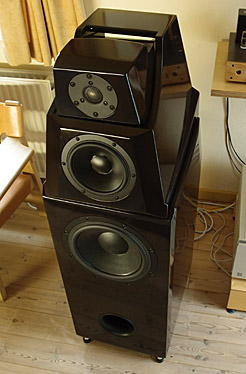
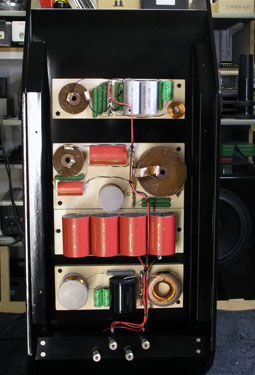 Jenzen ATS cabs ready for final sanding before spray paint. Thanks for all response during 2012 and best wishes for 2013! |
| 25-09-2012 |
|
I should go to more
hifi shows but every time I do I decide it can wait a while before I go
again. The recent show in Copenhagen must be the worst organised hifi
show ever with very few exhibitors and few guests too. Maybe I should
go to Munich next time. Best sound of show came from Dynaudio and
Rockport.
What I missed the most was
music. Exhibitors love to play "sounds", like recordings of
some fancy drums or a Fender bass played with a plectrum. Simple stuff
that will always impress by dynamics. Anyway...
If little music was played at the show, the records shops gave you the opportunity to bring home some. Buying your high school records can be tempting, and I did. I have these recordings on CD but they leave me cold, thus four freshly pressed vinyl records. Could the magic of high school parties be restored without the booze and the girls? Not quite, but there were surprises. I never heard these vinyls on a good hifi system. Back then it was Beogram 1000/Beomaster radios and some B&O speakers. And the amp had tone controls, even a loudness button to correct room conditions. How would they sound on a modern hifi system? Bob Dylan was disappointing. Nothing but midrange except for the track Desolation Row. This track sounds good and well, you never really finish with the lyrics of this song. The re-mastered AFTERMATH is excellent and brings me back to a time where my record collection was less than a handful. The Doors are true high school music and I wasn't disappointed. Still worth a listen and I'd forgotten how good musicians they were. |
| 26-08-2012 |
| The Jenzen
D has been up-graded with a new front panel and a few mods to the
tweeter crossover and I'm pleased having this speaker in stock again
although space is becoming a serious issue. Fortunately the Jenzen Illuminator is currently at the ScanSpeak production plant demo-room in Videbaek, and I was certainly curious to hear how they would perform in a room this size and with proper acoustic treatment.
The speakers are driven by a Gamut system, CD-player, preamp and two 200 wpc mono-blocks. These mono-blocks, delivering 400 watts in 4 ohms, could certainly get the Jenzens swinging like I hadn't heard at home from my Jungson power-amps, in particular the bass response was deeper and more powerful. The room itself made me seriously wonder what can be done to our living-room at home without making it look completely like a "stereo studio". It's bad enough with either the Jenzen Ds or DTQWTs filling the corners. Discrete acoustic panels here and there might further improve acoustics. What's next? I seriously don't know. I have plans for some ten speakers I'd like to build, but I have to choose, so for the time being I'm cleaning the workshop while waiting for inspiration. |
| 06-07-2012 |
|
HiFi Porn My job in an international company
recently brought me to Münich via Frankfurt. In both airports I had
plenty of time visiting the magnificent magazine stores we can find in
German airports. The amount of hifi magazines we can find is truly
amazing compared to e.g. Heathrow or San Fransisco, where you'll be
lucky to find more than HiFiChoice and similar - if anything at all. In
Germany we can even find two magazines devoted to diy loudspeakers
alone. Quite amazing. Germany appears to be do-it-yourself paradise. The stealth reflex port is X's
patented solution for a para-aperiodic vent. Its behavioral properties
allow for deeper more extended bass from the same or smaller enclosure.
In addition it has all the advantages of conventional ports but
completely eliminates chuffing. Here X uses an insulating material to
reduce the transmission of vibrations. Thanks to this solution the
sound requires less resonant assistance from the cabinet which
translates into lower displacement through the port. Because its tube
is lined with a fibrous porous material, the low frequencies cover a
larger spectrum previously possible only by either increasing the size
of the overall loudspeaker or the vented chamber.
The best ~30 litre 2-way floorstander - I've made so far, Illumina-66.htm. The "six-plus-one" is hugely popular for good reasons. Two drivers, a fairly simple crossover, simple cabinet work and usually high-WAF due to small footprint. The latter really depends on overall fit'n finish.
Nothing prevents us from making the best of midrange and treble from a two-way floor-stander and it can even be made to produce some decent bass. For most people hifi is not about recreating a live event in their living room, rather having decent gear giving us an illusion of a live event. Read more from the link above. What's next After finishing the
Illumina 66 is have started making the final cabs for my Jenzen
D speakers. The Jenzen TL cabs found their final destination with
the ScanSpeak
Illuminator drivers and I need these Jenzen Ds for reference. Quite
a few mid-cab front panels were made to possibly improve visual and
acoustic properties and the sketch below is close to what they will
look like. So far, no changes to the crossover are needed. The front
panels are made from 2 x 16 mm laminated black MDF, which I've found to
be as dense as HDF. I measured 840 kg/cubic metre, some 25-35% more
than ordinary MDF. MDF from the local home diy market is sometimes of
quite bad quality.
And finally I found a Lenco L75 turntable in close to mint condition. I'm very much looking forward to restoring this spinner with a new plinth and 12" Jelko tonearm. Based on overall construction and principle (idler wheel) this turntable should work as well as my Garrard 401.
The best speaker I've built - Some people question my statement that the DTQWT is the best speaker I've ever made because I've made quite a few speakers since then and how can I still hold this opinion despite Jenzen D, etc.? Well, the DTQWTs can do things none of the other speakers can do in terms of overall dynamics due to efficiency, mid-tweeter integration and because they don't have a crossover in the critical midrange. These are the three main features. The DTQWTs can play a piano, an oboe, a flute and a saxophone louder than any of the other speakers partly due to the large midrange driver, 8", and the large wave-guided 34 mm dome tweeter. Size matters and regardless of the quality of a 5-6" midrange driver there are limits to how loud they can play. The Jenzens all have less dynamic head-room due to these limitations although satisfactory for most applications (average living room size). The DTQWTs can be played to satisfatory levels with my 45 watts SET amps, something none of the other speakers can do and my 6C33 valves sounds better than my solid state amps. And some mistakenly think the DTQWT are only suited for low-wattage valve amps because they were developed for this, but any good amp can be used with the DTQWTs, they may just not sound as good as they could if you had a good triode amp. There are reasons people bother nurturing valve amps as some require regular service, but we don't get it all for nothing. So, the DTQWTs are still my best speakers regardless of cost and specific areas where some of the others may excel. All speakers are compromises and fortunately the amount of speaker designs seems unendless and there should be one for your taste too. |
| 09-06-2012 |
| The Jenzen
Illuminator has been launched and I'm pleased with the result. The
26W bass driver goes deeper than any of the other Jenzens; the price to
pay is reduced efficiency and the Illuminator needs a sturdy power
amplifier to bring out the best. I've had regrets that the 6640 Be dome
wasn't used but this tweeter just didn't perform well in this set-up
due to a "reach-out, here I am" quality I wasn't able to
handle in the crossover. As always, driver matching has to be tried
before any given combination is certain. The 6600 tweeter was doing
exactly what I wanted it to do, playing treble - and nothing more. The
6640 will be tried in other speakers to come. Next in line is a 30 liter two-way from ScanSpeak 18WU/4741T00 and - again - the D3004/660000 tweeter + D3004/662000 as an alternative. Crossover simulation suggests several interesting options and I looking forward to this most interesting part of the project. |
| 28-03-2012 |
|
Springtime
temperatures should call for garden work and preparing for this year's
vegetable garden - and so it does, but speaker work is continuing as I
have exiting ScanSpeak constructions in pipeline. Up-coming is a Jenzen
Illuminator and the preliminary work is finished; that is, getting the
acoustic offset of mid and tweeter right and testing if my preferred
crossover topology will work - and it does. In fact, the 18WU driver
has an excellent frequency response on the Jenzen baffle making
crossover work easy - and simple.
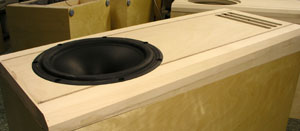 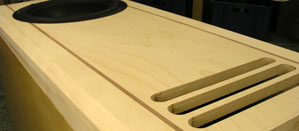
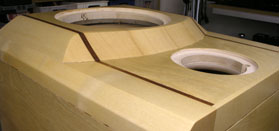  The tweeter will be the beryllium dome and I'm keen to learn how good it is in comparison with my current diamond tweeter/Accuton set-up. My Jenzen Diamonds will be disassembled as I need the basic Jenzen cabs for the Illuminator speaker and the diamonds will have their reincarnation in new cabs later this year. I need these for reference as the deliver the best mid-tweeter level of transparency I've yet experienced and numerous visitors have confirmed this. After the Jenzen Illuminator there will be smaller two- and three-way floor-standers from the 18WU drivers and I will also use the 4 ohms version of the 18WU drivers to increase system sensitivity, maybe not for low-wattage valve-lovers, but speakers in this category will never be my first recommendation for less than 50 wpc amps. An adaptor for mating the ScanSpeak 7100 tweeter with my TW034 waveguide have been tried in my DTQWT speakers, offering enhanced resolution and transparency but maybe not the overall coherent sound from the 8008/TW034. Making waveguides is on and off and never really ends as new ideas emerge from time to time in order to improve performance. So, lots of projects in pipeline, only building cabs takes time.
This winter's live performances included Ravel's Piano Concerto in
G-major at the local Symphony Hall featuring an American pianist, Simone
Dinnerstein, and it kept us all spell-bound for the entire length
of the concert. Look out for this lady, she's something. The first
movement in this piano concert really holds elements of Rhapsody in
Blue by Gershwin, and I guess Ravel did listen to contemporary
jazz music after moving to the US - and I wouldn't be surprised if Keith
Jarrett digs into some Ravel piano recordings from time to time. |
| 02-02-2012 |
|
January and February
for sure are diy speaker months! The cold winter months call people to
the workshops cutting sheets for cabs, reading diy websites and making
all sorts of plans. Well, it also tells most diy business is taking
place on the Northern hemisphere - as least based on website statistics
and mails received.
What I have noticed over the last 2-3 months is that I get more and more mails I can't answer properly. Questions about strange speakers I've never even heard of or how I think a given speaker will interact with a given room. The latter is really impossible to answer. Whether you buy a pair of speakers or build them yourself you always run the risk of total failure due to poor room acoustics. Too much bass or too little bass are the typical problems and I'm mostly short of suggestions as the only information I have is basic room dimensions. Quests for building finished speakers are another frequent topic and having a full-time job this is out of the question. I can hardly cope with my own plans and have ideas for years to come. Sorry! ScanSpeak tweeters have kept me busy and I have launched some measurements and an article on a waveguide for ScanSpeak D2904/710003 tweeter. This waveguided tweeter was tested in the DTQWT construction and for the first time found suitable as an alternative for Audax TW034. Better? Hmm... different and in the end a matter of taste - and definitely more expensive. Out of curiosity I also bought a line stage kit from diyhifisupply and I can fully recommend this product, which can be had for down to 300 USD + two good coupling caps. Not a bad entry into the valve world and it should be trouble-free for years and years. This line stage together with an e.g. JungSon Duro class A amp is an unbeatable combination in terms of cost/performance and can be realised for close to 1000 USD. Today we can have high-performance gear at price that was unthinkable only a decade ago. Last but not least someone lend me a pair of ScanSpeak 18WU/8741T00 drivers and what was planned as a quick review of one of the Illuminator series, turned into weeks of crossover tweaking. Eventually a pair of stand-mount monitors was the result. Being used to DTQWT and Jenzen speakers it took some time to get used to a small "6+1" again. 150 square centimeters of pulp really can't move a lot of air, thus numerous crossovers were made before I was satisfied - and it gave ideas for future experiments. The Illuminator drivers are not as smooth compared to the Revelator drivers and extra care is needed in crossover design, but these sandwich membranes deliver details former drivers may have been short of. Value for money? Doesn't make sense. You're buying a specialty product with specific design features and you have to pay. And never judge a product based on measurements alone. It may takes many constructions and endless crossovers to get to know a product's full potential. Check out this interview of Neil Young talking about the inadaquacy of MP3 files and low-fi! Do you know what kind of media Steve Jobs listened to when at home? Thanks to Max/Norway for sending the link! |
| 05-12-2011 |
November seems a busy month on speaker building. The number of mails have been overwhelming. Hope some of you got sensible and helpful responses. I know some of you didn't because of what is described here: crossovers and this choices but that's how it is. I can't tell if drivers I don't know from own experience will make a good system and most of you writing appear not having measuring equipment to get the crossover right and even the best drivers can be a waste of money without a good crossover design. Launching
the Jenzen Accu
wasn't easy. This is a seriously expensive speaker and I can't help
wondering if someone building the Accu will think it's worth the
money. So, I had to ask myself if it feels right for me and after
several weeks' audition and drivers breaking in I felt it was right.
I've missed it every time I had something else running and it makes me
confident it's worth while. Last
but not least: I've already had a number of mails asking if a
20-30 watt PP/SET valve amp can drive the Jenzens speakers. To my mind
they can't. On average we're some 6 dB below e.g. DTQWT sensitivity
and we need at least 4 times the amount of power comparatively. The 80
watt Jungson does really well and generally I recommend 100 wpc, being
valve or solid state for the Jenzens. Maybe a really good 60-70 watt
PP valve amp will do well too, but I don't have such a thing and can't
guarantee. |
| 01-11-2011
Loudspeakers we don't come across every day! One with limited dynamic capability and one with almost unlimited dynamic capability. |
|
I've had the opportunity to review the Manger MSW transducers and my expectations were high. I had hoped these one-of-a-kind drivers had the answer to phase distortion and impulse correctness, but I was seriously disapointed. These drivers have a high magnitude of nonlinear distortion and fortunately I found another article confirming this, because after decades of praise I was a bit nervous to rock the boat. I don't say these drivers are useless, but they have serious limitations on terms of portraying the depth of an acoustic scenario (lack of dispersion) and they don't go loud before distortion becomes clearly audible. ---o-0-o--- 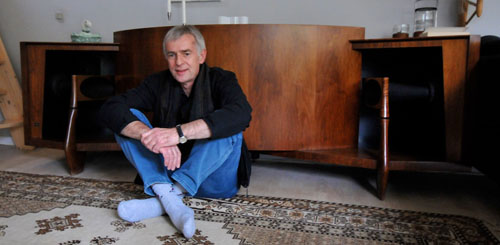
Who would think that a
few kilometers from where I live there would be a JBL Paragon
loudspeaker fully functioning? The owner bought
these back in 1975 and has only had new surrounds added to the
legendary LE15 bass drivers. A friend of mine set up the arrangement
and we had an enjoyable hour in front the Paragon.
For those unfamiliar with the Paragon design, the above sketch tells what's going on. The most unusual thing about this speaker is the midrange horns pointing towards a huge curved front panel meant to disperse sound into the room; this quite opposite to the tweeters located inside the bass horns and pointing forward. Now, sitting in front of the speaker - on the floor - because vertical dispersion from the tweeters is limited, the usual quest for soundstage depth, spatial information and three-dimensionality is far off. Forget it! This speaker makes music in a room and it does it like few. Time alignment, phase coherence? Forget it! The shocking thing is that when energy transfer is optimised way beyond what we are used to, we may get away with grossly neglecting all the other parametres. This doesn't mean the Paragon is the way to go, because it isn't, but we can go home and seriously think about ways to improve dynamic headroom and reduce distortion. The inability to perform appropriate energy transfer from our rediculously small direct radiating 5-6" middrivers is pinned to the wall. |
| 14 Oct 2011 |
|
Jenzen
SEAS ER and Jenzen NEXT
constructions launched. Pics
of the finished cabs have been added. If you have
the time and skills in woodworking, you may be in for a treat from
modest priced drivers (SEAS ER). The NEXT version doesn't come cheap,
but delivers the goodies.
Response has been overwhelming and three ER kits were sold before the paper was dry, so there seems to be quite an interest in large speakers and I feel confident going on with the work developing further Jenzen variants. |
| 26 Aug 2011 |
It's with great satisfaction I now lauch the Yamaha NS1000M Up-grade Kit. This completes the range of up-grade kits covering the most noticeable speakers of the Sixties, Seventies and Eighties, the Tannoy MG15, the JBL L100 Century and now the Yamaha NS1000M. All three speakers were made in considerable numbers and many are still in service today.
This kit will not be particularly cheap as making good
things better takes serious means. The kit is a "closed
kit" like the JBL L100 kit, meaning no crossover component values
is given here, it comes with the kit. The first Jenzen
speakers, Jenzen SEAS ER is close to being finished and I only
need to paint front panels to make them ready for presentation,
hopefully by the end of September. As I have SEAS CA18RNX drivers on
the shelf - and they fit the routings - it would be silly not also to
include this version in case someone should have these drivers
available. Only the mid crossover needs minor tweaking to fit this
driver. Since
last update
I've had requests for speakers below 200 €/pair to
4000-6500 €/pair! Not much in between. Sorry to say that none of
these requests can be fulfilled. I have two kits below 200 €/pair (I
think), here
and here.
SEAS and Peerless 5+1 inch speakers. If cabs are made from MDF and not
too expensive capacitors are used, I think these can be made from
around 100 €/speaker. Most speakers I build are based on curiosity. If I don't have a
feeling I can learn something new, motivation is low. Now, 6500 € is another story. First of all, developing speakers this
size is a serious investment in terms of time and money. Secondly -
and based on history - nobody builds it, not even the
person who asked. Thirdly, I can't get rid of it again - unless I sell
it for nothing. Last, but not least, I have the speakers I need, the DTQWT
and If I had the space, the DTQWT-12.
Regarding seriously expensive speakers, some diy'ers think it's a
matter of making "some" cabs and throwing in expensive
driver - and then I have to make it all work. It doesn't come that
easy. Often a range of cabs have to made to get it right and sometimes
the tweeter - despite its price and praise - just doesn't blend well
with the middriver and another one has to be found. Cloning the Wilson
Audio MAXX3 or Marten Coltrane 2 is not an easy task and in both cases
OEM (Original Equipment Manufacturer) drivers are
used, and finding substitutes may be impossible.
|
| 28 June 2011 |
|
After
the 8008-CENTER
speaker, the Jenzen speakers are next and I recently cut sheets to get
started on the cabinet work as can be seen to the left.
"Jenzen" because they are based on the Jensen
1071 project, thus the name Jenzen to make a distinction. DIY is about making quality without
paying fortunes and what we can do commercial manufacturers
cannot, is totally spoil the drivers with good cabinets. We can spend
endless hours making cabs and we don't have to charge anybody, and we
can even afford decent components for the crossover. Something that is
a serious limitation to a commercial speaker, where working hours
and components' cost have to be kept low. Both cabs features transmission line loading and the midcab some 46 mm thick side walls to keep cabinet colouration low. First driver set-up will be SEAS CA26RFX/ER18RNX/T25C003 as seen above. This reed/paper pulp cone midrange is something! Smooth response and resolution on par with even magnesium. |
| 5 June 2011 |
|
So, when
are we building loudspeakers? If visits to my website hold any
relevance to the number of speaker projects initiated, then February
is the month where we go to the workshop cutting MDF/plywood sheets.
According to Jantzen Audio, this was also the month where most DTQWT
kits were sold ever.
I admit I have to pull
myself together really hard to get started cutting sheets, but once
started I get caught up in the process and even think of the next
project during the process. Making cabs takes peace and concentration to
get it right and every single time I have finished a pair of cabinets, I
know how I will make the next pair to perfection. However, the new pair
is always another speaker with different cabs and takes new measures to
get it right.
Month of May was mostly spent making client crossovers for a 2-way Audio Technology speaker and two 3-ways based on SEAS and ScanSpeak speakers. The ScanSpeak speaker had its SS 15M exchanged for a SBAcoustics 6" driver and although not as smooth as the SS 15M driver, the sonic results were good. At around 100 USD each these SBA drivers deliver excellent sound, but the break-up nodes in the 4-11 kHz range takes special precaution. A single notch filter can make most of it, but ideally two are needed to make a smooth roll-off. It also has some "rubber" (?) problem around 1.5 kHz, which is not apparent from driver specs. The SB17 is a small 6" driver featuring only 120 cm^2 membrane area, where a SEAS 6" mostly makes 126 cm^2 and a ScanSpeak 6" revelator makes 150 cm^2, thus also claimed a 6½ inch driver. True 7" drivers are rare, but Audio Technology 6I52 is an example with some 165 cm^2 radiating area.
The other SEAS project featured twin M15CH002 mids on a wide curved baffle. The SEAS 10" nextel bass driver and Crescendo tweeter completed the set-up. Now, this speaker can obviously be compared to the Cyclop and the main lessons to be learned are these: Use minimum 130-150 cm^2 membrane area for the midrange if crossed at ~250-300 Hz - and if we want a "big" speaker that can play loud. A wide curved baffle allows the middrivers to work all the way down to its point of crossover without any baffle step loss. I render this important and have become more and more concerned with baffle step loss and baffle edge diffraction as -mostly - necessary evils. When we can avoid it, there's a premium. Last but not least both speakers had an all-pass filter to the tweeter allowing true LR2 topology. Stepped baffles may had prevented this, but this was not within design parametres and the benefits outweighed the added complexity. |
| 02-April-2011 |
| Thanks
for your concern! Yes, I'm still alive, only not publishing a whole
lot of speakers every second month - mostly due to building
amplifiers. That doesn't mean there aren't speaker plans in the
drawer, actually many, many plans, but I do have a full time job and
cutting sheets takes hours and I needed a break after the OBL-11 as
mentioned in the Feb notes. I have been selling a lot of stock drivers - and buying new ones, enough drivers for at least 6 new speakers. One that for sure will emerge some day is an Ekta mkII featuring HIQUPHON OW4 tweeters, stepped and sloped baffles, simplified crossover and solid cabs. The prototype sounds very promising and hopefully I'll pull myself together for the woodwork before too long - although springtime is ahead and usually calls for alternative occupation. Next I'm gathering drivers for a range of Jensen-type speakers. Yes, big 3-ways with 10" bass drivers in transmission line cabs and 6-7" mids, stepped baffles and low-order filters. SEAS, ScanSpeak, Peerless (Nomex164 for mid), Ciare, SBAcoustics and Audio Technology drivers are on the shelf for these constructions, some very affordable, some seriously expensive. Please do not ask when these constructions will emerge. Based on the last two year's experiences, building new speakers have become more time consuming due to new design criteria, and a lot of prototype work follows each construction. The all too common rectangular box is in many ways a bottleneck in making good sound from even seriously expensive drivers, where ensuring proper radiation area and proper time-alignment can make good sound from even low-cost drivers. What doesn't come cheap are good crossover components and I have a lot of reports back from people spending many hours on woodwork and drivers, but fail to spend more than average on crossovers. Even low-cost drivers benefit from proper components. It's like buying a Porsche with a 1.2 litre engine. |
| 05-Feb 2011 |
|
After finishing the OBL-11 things have been quiet speaker
wise. Time to listen to music, attend concerts, reading
magazines. I read e.g. Stereophile due to the thorough
measurements on speakers done by John Atkinson. There are
a lot to be learned from these reports and it's
interesting to see how e.g. Wilson Audio speakers develop
over time, in particular the Watt/Puppy, now Sasha WP,
and the Sophia. From time to time I've had the urge to
copy the cabinet design, but making a Sasha cabinet clone
is extremely time-consuming and something that only a
very few will follow. I'm sure the Jensen speaker will make up to any of
these two speakers - and the cabinet is much, much
easier. I'm pleased to see more respondents to this
construction.
What has happened to the WP/Sasha, is a goodbye to the sub/sat set-up, where the mid/tweeter in principle is a full-range speaker supplemented by a subwoofer. The Sasha is a more common 3-way speaker with a point of crossover around 200 Hz. I'm not sure the Watt/Puppy really had a high-pass filter to the ScanSpeak 8545 derivative, but the new middriver, which, by the way, looks like an SBAcoustics driver, certainly has, and displays a smooth, almost 1st order decline, where the woofer more looks like 2nd order. This has worked for me in the Jensen, the PRELUDE and OBL-11. If we use a smaller midrange like the AudioTechnology 15H52 (PRELUDE) we need to raise the point of crossover an octave to around 350-450 Hz to enable the midrange to cope with required power handling. Most good 6" drivers, dependent on front panel dimensions, will do fine down to 150-250 Hz. The "problem" of having a highpass filter at 150-250 Hz is the amount of microfarads needed for the high-pass filter. The quality of these caps is extremely important and 100 uF is serious money using super caps. 200 uF in total easily mounts to around 5-700 USD or more. For midrange I've experienced good results from Obbligato Gold caps, and also the Obbligato Film Oil Caps do well for midrange, but not for tweeter; here we need better, and usually super caps are within reach as often only 3.3-6.8 uF is needed. I've recently had the opportunity
of auditioning - and measuring - the Eggleston Andra speaker and this was indeed
interesting, not least being able to see if all the nice
claims at producer's website really hold water, which
they mostly don't. All drivers are standard off-the-shelf
drivers (very good drivers has to be said) and the double
Morel mids, which turned out to be Morel SCW 636 bass
driver, and Dynaudio Esotar makes a seamless integrated
soundstage, utterly transparent and dynamic. The point of
crossover between mid and tweeter appear to be around 1.5
kHz. The two 12" Dynaudio bass drivers in isobaric
configuration truly are outdated and the overall system
would benefit from some modern bass driver with a higher
mechanical Q compared to these relics. I have to admit I
came from a 15"/open baffle bass set-up and found
the Eggleston bass lacking punch and speed comparatively. Tweaking my Audio Mirror amps for new 6C33 tubes has been truly rewarding, although not completely finished yet. Minor hum remains, but I feel sure I'll find out why some day. These 6C33 really are something. In the current set-up they deliver transparency that made me stay up all night going through my record collection - one of these rare occations that doesn't happen too often. With their 40+ WPC they can make my OBL-11 rock and kick butt like a solid state. My JungSon amp has been modified to a power amp alone (bottom of page). The JA88D line stage is easily detached and the power amp input wires connected to the two XLR input sockets. The gain of the power amp section makes a perfect fit to my 6N6P line stage and adding a balanced output to the 6N6P is next on my to-do list. |
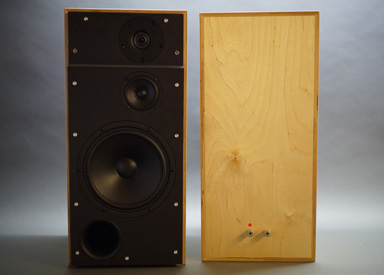

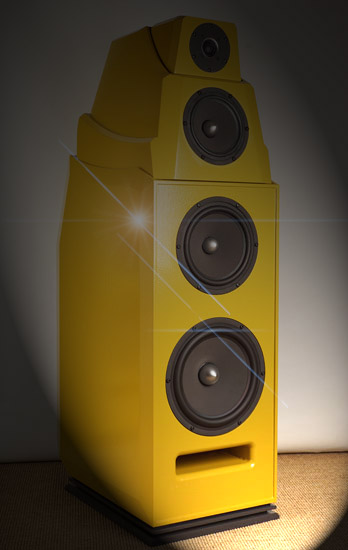
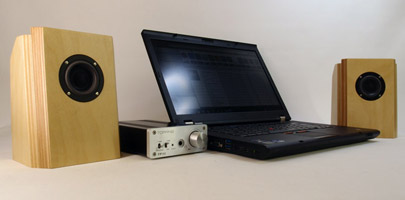
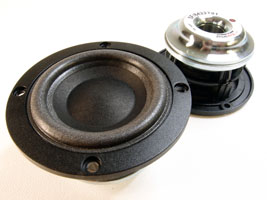
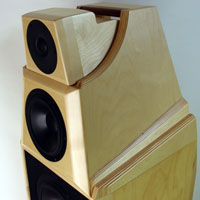
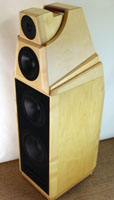
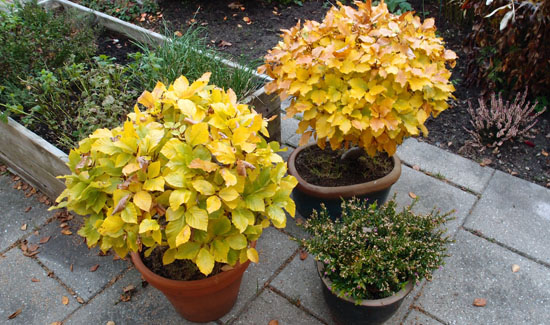
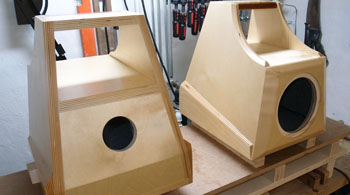
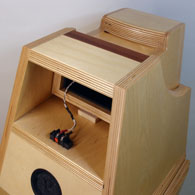

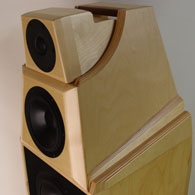

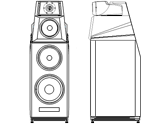
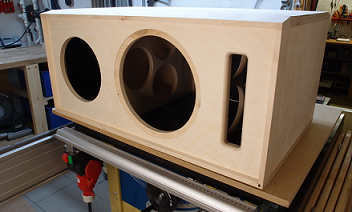
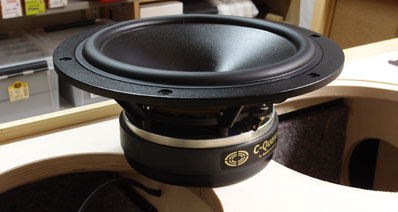

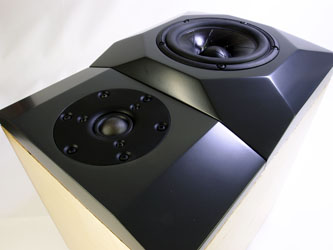
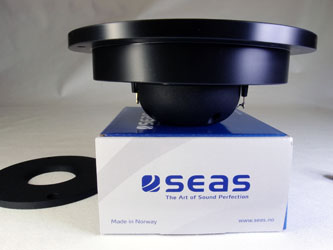
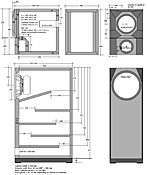
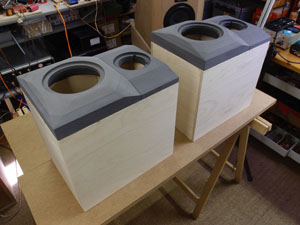
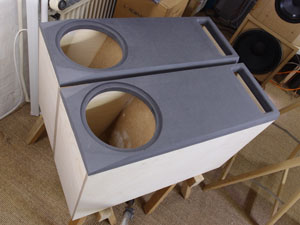
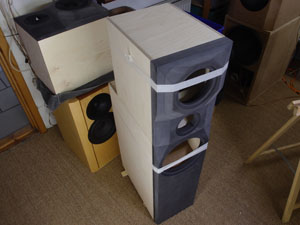
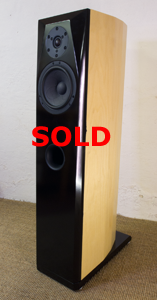
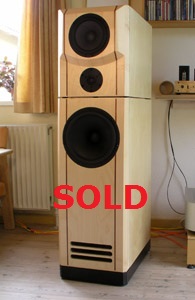
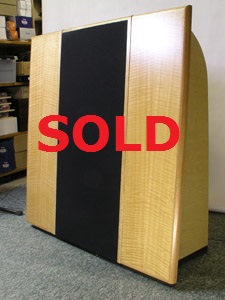
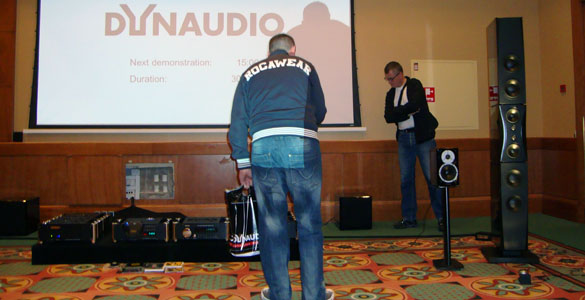
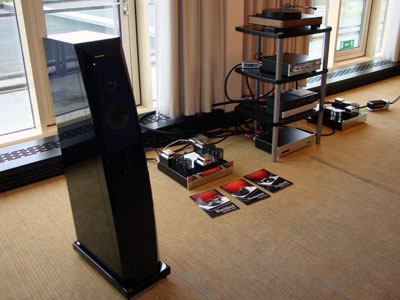
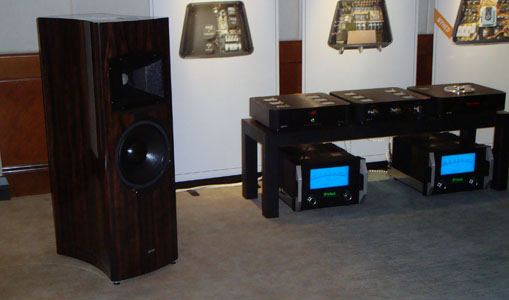
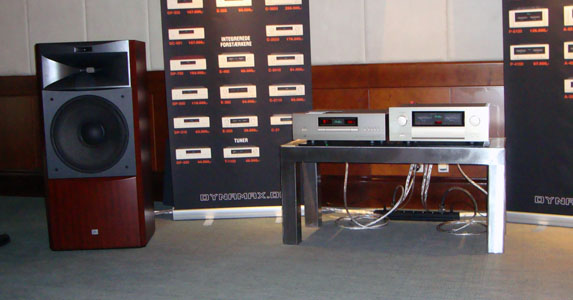
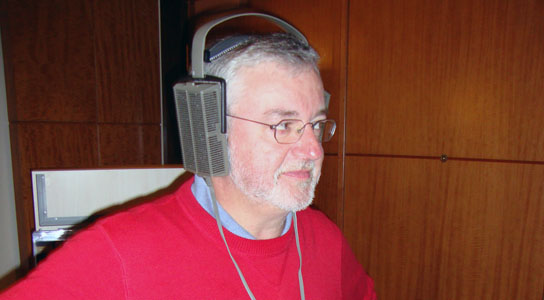
.jpg)
.jpg)
.jpg)
.jpg)
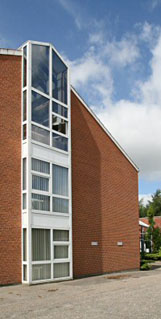
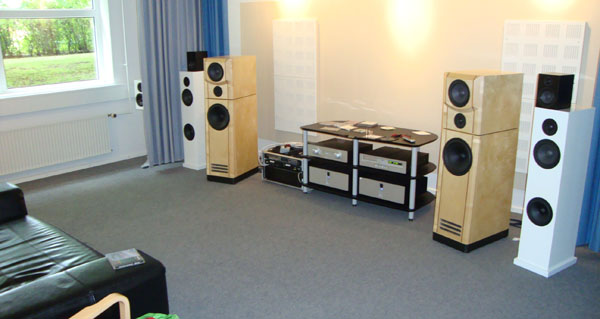
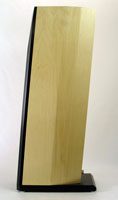
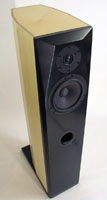
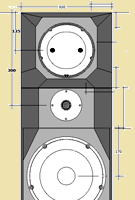
.jpg)
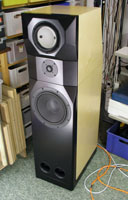
.jpg)
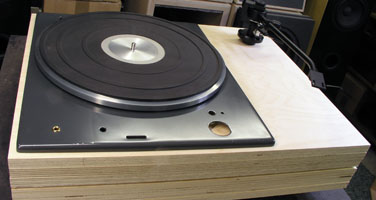

.jpg)




